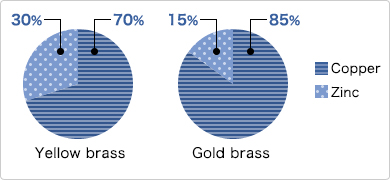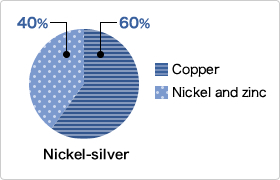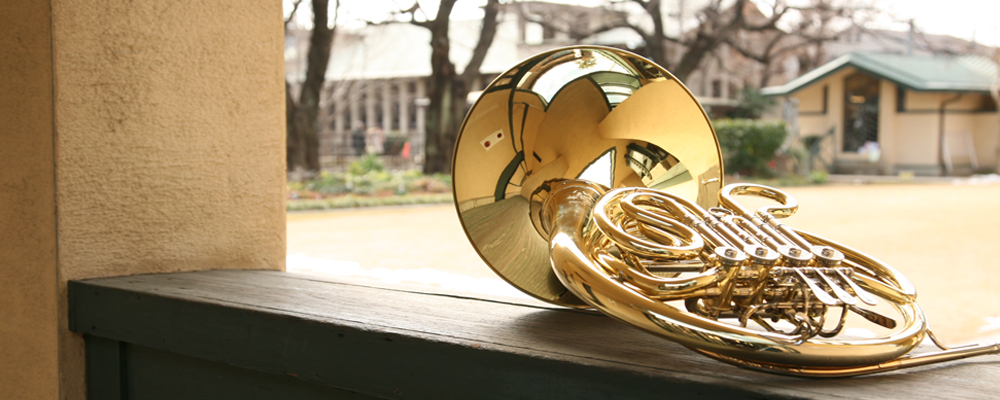Choosing a Horn
The tone is affected by the material
Because the timbre of a wind instrument is determined by the quality of the vibration of the air column that passes through it, the materials used to make a wind instrument will also have a slight effect on the timbre, in addition its shape and length.
Brass, which is an alloy consisting of copper and zinc, is more malleable (easy to work with), and corrosion resistant (resists rusting) than iron or other metals, and since it is also pleasing to the eye, it has long been the primary material used for making the bodies of brass instruments. This is what gives the brass instruments their characteristic tone.
The trumpet, trombone, horn, and other brass instruments have a range of timbre that is determined by the type of brass (determined by the relative amount of each component material) used for the bell.

Ratios of copper and zinc used in yellow brass and gold brass
| Amount of copper | Timbre | |
|---|---|---|
| Gold brass | Proportionally high | Generally has a broad, rich timbre |
| Yellow brass | Proportionally low | Generally has a bright, tight timbre |
Sometimes a shiny white alloy consisting of copper, zinc, and nickel-called nickel silver-is used instead of brass. It is even more corrosion resistant than brass, and Kruspe horn bodies are made of this alloy. Yamaha uses a special nickel silver alloy that has a different constitution from that of common industrial nickel silver, and that has a deep, solid timbre.
Even on instruments with a gold-colored brass body, the slides, leadpipe, and other parts are sometimes made of nickel silver because of its wear-resistant and corrosion-resistant properties. This can be seen in the two-tone color of many horns.

The ratio of copper, nickel, and zinc in nickel silver
The surface finish
Finished metal tubes are filed and sanded to make their surface smooth as glass, and then they are coated with a polish and buffed with a high-speed buffer to give them that beautiful metallic shine.
At last the stage, lacquer or plating is applied. The primary purpose for the lacquer or plating is to protect the metal from rust and dirt, but it also has a slight effect on the timbre of the instrument.
Lacquer seems to contribute to a solid, dark tone that projects well. Non-lacquered instruments are said to generally have a deep resonance.


